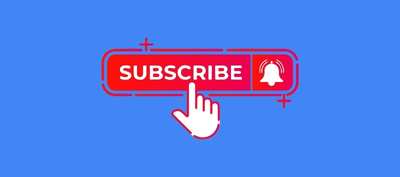How to Create Social Media Personas
Dutch | Espanol | French | German | Indonesian | Italian | Portuguese | Vietnamese

Social media gives you fascinating insights into the minds of your prospective customer base. On social media, most users speak in unfiltered tones, are not shy to express what they like, and are more likely to form a connection with brands.To understand the motivations, behavior and psychology of your customers, you need to find social media personas for your audience. Now, you can now create and use them easily with Social Persona by Delve AI. It helps to have a social media persona for your brand as well.
What is a social media persona?
A social media persona is a fictional representation of your target audience based on the data that you have gathered from their social media accounts. Brands can have anywhere between 3 to 7 different personas, each of these will give you a deep understanding of who you are selling to.
Here are the recommended dimensions of a social media persona:
- Age
- Gender
- Location
- Lifestyle
- Hobbies
- Designation
- Influencers who they follow
- Active social media channels
- Content types they prefer
- Hashtags they use extensively or engage with
- Goals, motivations and desires
- Buying triggers
- Pain points
All of the above factors become a part of your social media personas. Each of these social media marketing personas represents a potential customer who engages with your content, and buys from you after seeing it on social media.

Here’s a social media persona example to give you a better idea:
- Age: 25
- Gender: Male
- Location: Dallas, Texas
- Lifestyle: Lives alone in an apartment
- Hobbies: Horticulture, reading, watching TV shows and movies, attending stand-up comedy events, etc.
- Designation: Marketing Manager
- Influencers who they follow: @sommerray, @krisgethin, @cristiano, @193countries
- Active social media channels: Instagram, YouTube, LinkedIn
- Content types they prefer: YouTube videos, Instagram Stories, Instagram Reels
- Hashtags they use extensively or engage with: #football, #fitness, #sidehustle, #investing
- Goals, motivations and desires: To start investing money, start a side hustle, and have two to three streams of income.
- Buying triggers: Reading success stories of side hustles, watching how-to video interviews on social media, testimonials from friends.
- Pain points: Not knowing where or how to start a side hustle. Afraid that he will not be able to manage his expenses once he grows older or will not be able to clear student loans.
Benefits of social media personas

#1 Helps improve your content strategy
Social media personas help you create content that is catered to different segments of your audience. Your brand voice will be aligned with what your customers are expecting from you. Studies show that more than 72% of customers engage with content that is personalized for them.
If you have an audience that is interested in stock trading, then you can post about share markets regularly on one platform. If you find that some of these audiences are engaging with influencers on other channels, then you can repurpose the content in these channels too. Even better, use influencer marketing to leverage their audience.
#2 Your ads become more optimized
The most successful ads are those that speak directly to the audience. It should contain information on how it solves the pain point of the TG (target group). With the help of your social media persona, you will be able to identify the kind of solution they are looking for and you can position yourself as a business offering that service. Use the advertising options on various social media channels to reach out to the right person.
#3 Identify key influencers
Ads and content optimization are not the only things you can do by using social media personas. You can also find and connect with influencers relevant to your business across various social networks. For example, if your social persona takes an interest in plant based protein, you could begin by identifying influencers who are active in the plant based diet community. These influencers will likely have a reasonably large following of people who are also interested in a similar diet. You can then implement social media influencer campaigns to attract and collaborate with them on various projects. Identifying influencers can guarantee the success of your social media marketing campaigns by ensuring that they reach your target audience.
#4 Get into niche markets
When you have more clarity on who your audience is, you will be able to identify products and services that might be helpful to them. You might not even have thought of getting into this niche because you assumed that your TG might not be looking for it. Also, no matter what kind of market you are in, there will be fierce competition, and it pays to be in newer markets where the competition isn’t as much.
Instead of just offering generic services and products, brands should also come up with niche offerings. This is exactly where social media personas are of immense help. When you offer specific services, you are more likely to attract an audience who is looking exactly for that. The conversions will be higher and you will also be able to do a good job.
Types of social media personas
As per Smart Insights, there are six social media persona types. They are the following:
- No shows - These are people who are barely involved with social media although they do use ecommerce sites infrequently.
- Newcomers - These are users who might be active on a single social media site, usually Facebook. Their objective in being a part of social media is to enhance the relationships that they have offline.
- Onlookers - These are people who can be considered active on social media channels, but only by virtue of lurking around. They do not share any personal information either.
- Cliquers - These are people who are active users of just one network and are usually influential among their circle of friends and family.
- Mix-n-Minglers - They regularly share their thoughts on social media and interact with a variety of connections.
- Sparks - These are some of the most active users of social media who deeply engage on many topics. They are also the ones who become advocates of their favorite brands.
How to build a social media persona for your brand

Identify your TG:
Your brand persona is how you are going to project your brand with the help of social media. It should be something that attracts your target audience. The first step to creating a social media persona for your brand is to identify your TG. You can do this by writing down the characteristics of an ideal customer of yours. Write down every single attribute about your ideal customer - age, interests, hobbies, location, etc.
Choose your brand voice:
Your voice cannot be the same everywhere. Although you should not confuse your users by sounding different in every place, our point here is that you should act based on the platform. For example, memes on LinkedIn are a big no-no. Make sure that the voice that you choose is reflective of who you are as a brand. Do not try to be someone you are not. For this, you need to have a strong clarity about the image that you want to show.
If you want to be seen as a serious brand, then your social media posts should reflect that. For example, if you are a bank, then it is expected of you to be serious. Although you can be fun sometimes, you cannot afford to be construed like that always. Also, ensure that your brand voice is the same across all channels. When customers see that your personality in one channel is completely different from another, you will come across as not trustworthy.
Your social media profiles should reflect your persona:
Update all your social media pages regularly. Ensure that the information you are providing is accurate and also be mindful of the tone that you are using while you are putting out content. Use the About section in each of the social media channels to tell your customers exactly who you are and what they can expect from you.
Invest in visual branding too. Use your company’s logo across all channels. Make sure that you also have a color palette that your audience will recognize you with. Create a style document where you can outline the colors and fonts for your brand that should be used everywhere.
Once you start posting content, make sure that you stick to your brand voice at all times. Changing your persona always will make you unreliable and customers may not be appreciative of that.
Find a model:
Pick a famous personality who is an embodiment of your target market in terms of shared interests and character traits. It would make sense to choose someone who has a lot of experience in the field. The purpose behind this is to provide you with a benchmark when it comes to creating content. It will help you stay consistent with your brand’s social media content.
Do remember that your persona should keep changing based on the market scenario, shifting customer expectations, goals shift, and so on.
How to create personas for your social media audience:

#1 Use existing social media data:
Do thorough research on the social media channels that you are using currently. Thankfully, most of these platforms have powerful analytics engines of their own - Instagram Insights, Twitter Analytics, etc. Each of these share information about your social media followers on the analytics dashboard. Look for patterns and write down the characteristics of your existing audience.
Do remember that the behavior and characteristics of the same people might be different across the varied platforms. Someone who is open and honest on Facebook might be restrained on LinkedIn. Your objective is to look for people who have common attributes.
#2 Use an audience insights tool:
Since you need to create a well-defined social media persona, a native social analytics tool cannot give you a lot. You need to use a professional audience insights tool which pulls data of your audience from each analytics tool and analyzes them in total.
When you use a professional research tool, you will be able to gather insights of your audience on various attributes. Here are some of them:
- Educational qualifications
- Brands they follow
- Celebrities whose content they engage with
- Hashtags they follow
- Events and places they are interested in
- Lifestyle
- Purchase triggers
Each of these attributes and more will be available as a report to you in the dashboard which will give you a great understanding of your audience. Most of these tools are capable of creating new data segments by pulling common data points. You can use this to create multiple personas.
#3 Find out the platform your audience uses:
While there will be several social media channels that your audience will use, you need to find out where they are lurking around the most. Use the data from your social media analytics to identify which are the platforms they use the most. By knowing this, you will also get an idea of the kind of content they prefer on each platform. Do remember that each social media platform has a unique type of content and audience.
If your audience is mainly active on Instagram, you can easily figure out that most of them are youngsters. The tone of the copy that you create will depend on the age of the audience. In short, each characteristic of your audience will have an impact on every strategic decision that you take with regards to your business. You cannot send a barrage of emojis on LinkedIn and expect people to take you seriously.
Identifying the platform that your audience uses the most puts you in a position where you can create highly targeted and effective content that is most likely to convert them into customers.
#4 Define your customer’s goals:
Now that you understand where your customers are and what type of content they like, you now need to find out exactly what their goals are. Without understanding the goals of your TG, you cannot create strategies that will lure them into becoming a paying customer.
For example, if the goal of the customer is to increase conversions in their email marketing, then you need to find out where they stand right now in terms of conversions. You need to figure out what their present strategy is and go out of your way to create content that will bring them in. You should not send them marketing campaigns where you promise to help the customer create fantastic email drip campaigns. No, that’s not what they want.
#5 Define customer’s pain points:
There are always problems that stop your customers from achieving what they want. You need to know from your customer what exactly is stopping them from achieving their goals. Once you know where exactly the issue surfaces, you will be able to come up with better campaigns. You need to have a 360-degree encompassing understanding of the customer’s goals and the pain point they have which does not let them achieve it.
#6 Know how to engage with your audience on each platform:
Not all platforms are the same. If you create good content on social media, you will be able to attract new audiences, but you need to know how to engage correctly.
You should figure out when is the best time and frequency to post for each channel. Coschedule recommends the following:
- Facebook - 1 post per day from 1pm to 4pm
- Twitter - 15 tweets per day from 2am to 10pm with 1-2 hours of interval in between
- Pinterest - 11 pins per day from 2am to 4am, 1pm to 4pm, and 8pm to 11pm
- LinkedIn - 1 post per day from 10am to 11am
- Instagram - 1-2 posts per day from 8am to 9am and at 2am
However, these are just recommendations. You need to find a schedule that works best for you based on trial and error. There are tools and scheduling software which makes it possible to schedule them in advance instead of having to log on to these platforms at intervals.
#7 Ask for customer feedback:
There is nothing as valuable as customer feedback when it comes to understanding their expectations from you. You can ask simple questions to your prospects such as the following:
- What are your expectations from us?
- What type of content do you prefer from our brand?
- Do you find our social media content appealing?
- What attracts you to follow brands on social media?
- Why would you unfollow a brand?
Answers to these questions will give you a great deal of information about them and give you a direction as to what will work for you.
How to create and use social personas using Delve AI:
You can use Social Persona by Delve AI to easily create personas for your (or your competitor’s) social media audiences. For each business, you must specify the website domain and associated social media handles (optional) to combine audiences from major social networks like Twitter, LinkedIn, Facebook, Instagram, TikTok, Pinterest, and YouTube.
Our persona generation software automatically creates granular social segments based on the behavior, psychographics, demographics, and geographies of your social audience.
The generated segment-wise personas help you understand your target audience, discover their online habits, and build social media outreach. You will be able to analyze the interests and behaviors of your social audience, understand their reading/listening/browsing habits, and identify opportunities for brand amplification. Furthermore, you can use this data to optimize messaging and create top-notch content that will increase social engagement.
Benefits of using Social Persona by Delve AI:
With personas generated by Social Persona by Delve AI, you get high quality market research and rich insights from social networks. You can use them to get marketing ideas, build targeted ad campaigns, maximize reach, and increase your ROI. Social audience research insights include:
- Social audience segments: You can gain a deeper understanding of your social media segments such as followers, mentioners, and website visitors.
- Audience insights: Get detailed audience insights for each social segment like demographics, interests, behaviors, and affinities.
- Sources of influence: You can find out who your audiences follow, visit, and engage with and discover the best places to influence them.
- Influencers: Identify the people and organizations who have expert industry knowledge and significant social influence over your target social audience.
- Topics of interest: You can analyze conversations and extract the hashtags used by your target audience. This will help you find themes and topics that resonate well with them.
- Industry specific insights: Get rich industry insights and identify variations in key structure attributes specific to your industry/vertical.
- Competitor analysis: You can also analyze and track your competitors’ social media profiles. Extract meaningful insights and trends from their content and social audience to enhance your marketing strategy.
An added advantage of using our persona tool is that your social personas are automatically updated and these updates help to detect changes in consumer behavior.
How to use social media buyer personas:

While creating social media buyer personas doesn’t ask for the moon, implementing them in the right way takes effort. Here are some tips on using social media buyer personas effectively for your business:
#1 Communicate effectively with them:
What kind of customers do you have? What is their idea of fun? How do they like to consume content? Are they simple folks or do they like to be dazzled with show and pomp? How do they communicate with brands they buy from on social media? How do they engage with their friends or followers on social media? Once you know all of this, you will be able to engage them with topics and make them interact with your brand.
#2 Address pain points:
The reason why your customers are looking for your product or service is because they are facing some issues because of it. Address these issues directly in your marketing copy and every other place where you think your customer will interact with your brand. In fact, use a lot of content to help them out with their pain point without sounding ‘salesy.’ It will improve their trust in your brand and they are likely to consider you as a leader in the industry if they keep consuming your helpful content on a regular basis.
#3 Tell your audience how your product can solve their pain points:
Your target audience wants to know if your product will help solve the issues they are facing in their business currently. Capture the benefits that your product provides and how it can help address their issues. Use different types of content on your social media handles to share with your customers about what makes your product unique. Do not be desperate to close a prospect, let them know how you are one of the best choices they can make with the help of graphs, statistics, testimonials, etc. When you focus too much on the sale, it can be a turn off to most prospects.
#4 Competitor study:
It would be simply unwise to not use some strategies that your competitors are using to get ahead. While you cannot rehash competitor strategies just like that, you need to find the ones that apply to your business. Check out what their most popular posts were, what kind of marketing campaigns gave them the most success, how are they positioning themselves on various social media handles, how do they address customer issues, and so on. Study each and every strategy of your competitors with accuracy and thoroughness.
#5 Create shareable content:
If you want your presence on social media to make business sense, you need to create content that your TG engages with. Post different types of content, see which are the ones that resonate well with your audience. What are the different content pieces from your social media handles that they keep sharing with others? If you can get your audience to share your content, it will reach an even bigger set of people. It means you will be in a position where you can have more customers.
#6 Formulate a social media crisis management plan:
Nobody is immune to situations on social media that can negatively impact their company’s image and reputation. It can be a controversial statement, action, product malfunction, or data breach. Whatever it is, you are bound to face backlash on social media platforms.
You can effectively manage and stop this by using social personas to develop a legitimate social media crisis management plan. Use personas to set social media guidelines, assign individual responsibilities, and develop frameworks for employee posts. You should also always make sure that your brand image is uniform across all social networks. Doing this can stop a potentially dangerous situation from escalating and make it easier for you to change the flow of the story.
Conclusion:
Creating social media persona for your brand and your audience is pivotal to the success of your business. Defining social media personas for your audience will help you with drafting content and preparing strategies that will hit the right buttons for them. They are more likely to convert when you know which are the areas that they are interested in and what their expectations of you are. Having a social media persona for your brand will act like a guide for you on how to interact with your audience and also ensure consistency.
Frequently Asked Questions (FAQs)
What is a social media persona?
A social media persona is an archetype of your target audience based on the data that you have collected from their social media accounts, such as the influencers they follow, the content they engage with, the hashtags they use, the events they are interested in, and their lifestyle and purchase triggers.
How do you create a social media audience persona?
These are the steps you need to follow to create social media personas for your brand:
Step 1. Choose your brand voice
Step 2. Identify your target audience
Step 3. Collect existing social media data
Step 4. Use a social audience intelligence tool
Step 5. Find out the platforms your audience uses
Step 6. Define your customer’s goals and challenges
Step 7. Create social media personas
Step 8. Learn how to engage with your audience on each platform
Step 9. Ask for customer feedback
What is an influencer persona?
An influencer persona represents the characteristics and traits of the individuals who follow a specific influencer, brand, or topic online. You generally collect their demographic, psychographic, and behavioral data to create a persona that represents the interests and preferences of the people most likely to engage with said topics, brands, and influencers.
That said, influencer personas are a great way for marketers to understand their social media audience and build influencer marketing campaigns.
How to use social media personas?
You can use social media personas to spot social media trends, improve your content strategy, optimize ads, identify key influencers, and get into niche markets.









